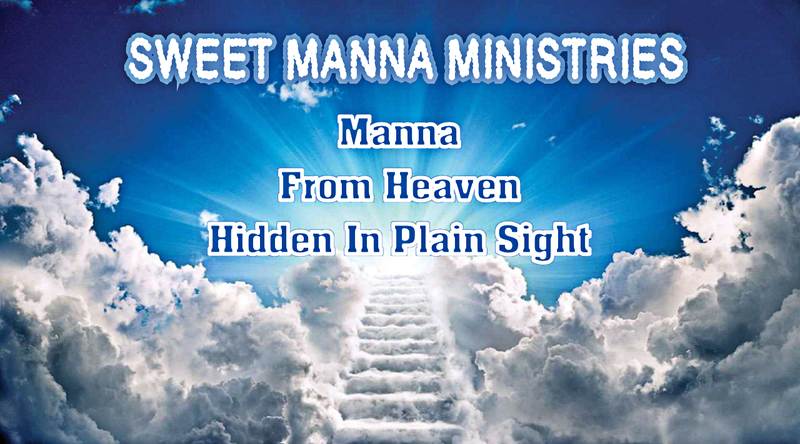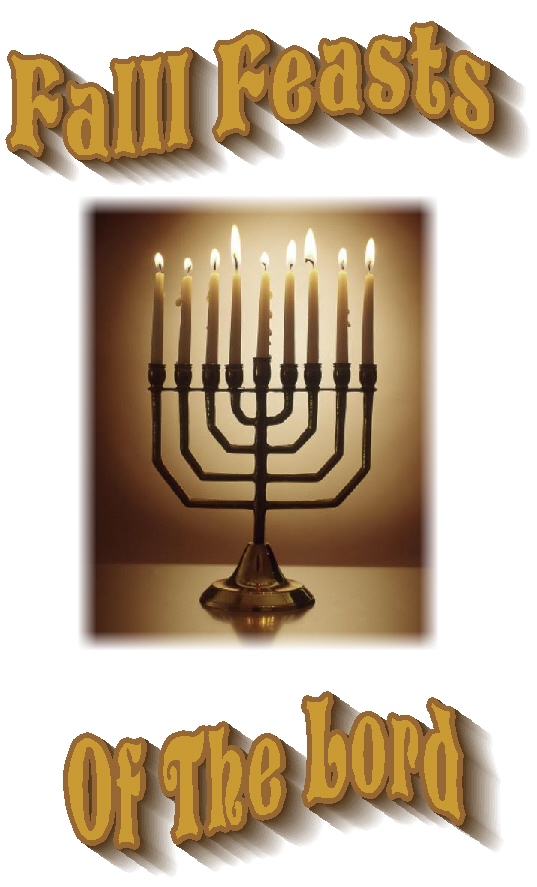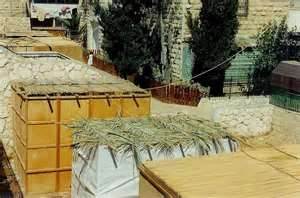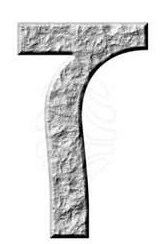The Teaching Ministry of
Rev. Marjorie Kummrow
Bible Studies
This ministry has made a choice to be "Biblically correct" as opposed to "politically correct" therefore we have forfeited the non-profit status available to us. Please note that all donations to this ministry are not tax deductible. Thank you for your support.
The Feast of Tabernacles (Sukkot) Part 2 Previous Lesson
The Seventh Feast and the Signature of God
The sages say that the Hebrew language has 70 different layers. The Hebrew numbering system is one of those layers. Another one of those layers is the various patterns and pictures that are painted for us to discover. Our God is a mastermind of riddles and hints (remez) that He hides in plain sight. We call it the “sweet manna that is hidden in plain sight.” This “sweet manna” for us to discover begins with the creation story and leads us to The Feast of Tabernacles.
In six days the Lord created the heavens and the earth along with the first players in this drama called, “Life on planet earth”, who were Adam and Eve. In six days he created everything that would be necessary for life to perpetuate until the final curtain. God created the heavens and the earth and all living things in six days and on the seventh day He rested. First He established the pattern and then He instructed his people to follow it by not working on the Sabbath either. They were instructed to keep this day separate from the other six days of the week. It was to be a holy day of rest for the people of God as well.
The Sabbath day of rest is a picture of salvation and it points to Yeshua who is the Lord of the Sabbath. It points also to the truth that salvation is a free gift that requires no work on our part. God instructed man to labor six days of the week, but on the seventh day they were to do no work at all. This speaks to the fact that on the seventh day or the day of salvation that no amount of good works will ever be sufficient enough to save us. The work that Yeshua accomplished on the cross is the only work that will save us and bring us into our seventh day rest. Because of Yeshua’s work on the cross we can enter into the rest that He provided for us. The seventh day speaks of Yeshua which means salvation and it also speaks of the rest that is promised in the Millennium when Yeshua will reign for a thousand years.
The Jewish sages believed as I do, that the pattern for history (His story) was set in the first week of creation. Because scripture says that one day is as a thousand with the Lord,1 therefore the sages believe that the six days of creation represent 6,000 years of history and that the 7th day represents the millennium of rest as stated above when Messiah will rule in righteousness.
According to this theory, humanity will have 6,000 years for the drama of life to be played out upon the stage of this earth. The seventh day of rest is a picture of the Messiah’s 1,000 year reign. The believers in Yeshua will enter this period of time with their Lord and King as they together rule and reign on the earth for a thousand years.
The same type of pattern and signature that is seen in creation is also seen in the feasts of the Lord. That is to say the pattern of six and then a rest on the seventh. The culmination of the Lords seven feasts, take place in the seventh month on the biblical calendar. There are six feasts that lead us to the seventh and final feast that signifies rest. It is interesting to note that of the seven feasts, there are seven weeks between Passover and Pentecost. His signature is seen in all seven feasts. The Feast of Tabernacles is a joyful celebration that is to take place for seven days. This feast has an appointed time because like every other feast of the Lord it is to be a dress rehearsal for the real thing. The appointed time is the fifteenth of Tishrei, which is the middle of the seventh month.
Unlike the previous appointed time of Yom Kippur that takes place on the tenth of the same month, Sukkot is an appointed time for joyous celebration.
Why, you may ask? It is because this feast is to represent the joy and gratitude of having our sins forgiven and the awesome privilege of walking with God and His desire to tabernacle with us. Each and every feast day paints a picture of the redemptive work of Yeshua. This final fall feast paints a picture of His second coming and His millennium reign with His Bride. No wonder it is called, “the season of our joy”. It will be joy unspeakable when this love story of the ages climaxes at the end of this age.
As we look to the history of The Feast of Tabernacles (Sukkot) we see artistic strokes of redemption being painted for the Hebrews in the desert after they were freed from the slavery of Egypt. The Lord instructed Moses to tell the people to build Him a sanctuary so that He could dwell among His people, i.e. to tabernacle with them.2 With the instructions to build a sanctuary in the desert, God introduces to the people of God; His desire to dwell among them.
The picture that I believe the Lord is painting is that these seven days of living in temporary dwellings represents seven thousand years that humanity has for their temporary home. For six thousand years the nations of the world will be ruled by man, however the final 1000 years will be ruled by Messiah and His Bride. It is my opinion based on scripture,3 that the end of this seven thousand year period will begin the age of eternity. It will be at that time that the people of God will be given a new heaven and a new earth. This is when we will receive our permanent home. Our permanent home will be with the Lord for all eternity.
Keeping all this in mind, let’s look at the prophetic brush strokes that our God has painted into the picture of this joyous fall feast. This rehearsal that points to the end of the age began in the desert as the Hebrews wondered in the wilderness. They lived in temporary dwelling places and all of their provisions were provided for them by the Lord supernaturally. Manna was provided for food and water from the rock. For forty years they wondered and their clothes or sandal’s did not wear out. The Hebrew’s life in the wilderness was totally dependant on the provision of the Lord. This I believe is a picture of the Millennium. We will be totally provided for in every way by the supernatural hand of Yeshua for 1000 years.
Looking further to the prophetic significant features of Sukkot, we see from scripture that the feast begins and ends with a Sabbath day rest. Yeshua is our Sabbath day rest.4 He is the beginning and the end. He began His story (our history) as the creator of the heaven and earth and He will be the one that will end history as we know it when He comes at the end of the age to tabernacle with us. The Sabbath day rest that follows the seven day feast of tabernacles is called the “eighth day”. This we will delve into a little later in the study.
Have you entered into His Rest? The beauty of His Rest is that it is a free gift to all who ask for it. You cannot work for it. The work has been done for you. You just come as you are to the throne of grace and ask for it. Just tell Father God that you are ready to receive the gift of salvation that was accomplished on the cross by Yeshua. Tell Yeshua that you want Him to make your heart His dwelling place. He is standing at the door of you heart just waiting for an invitation to come in and dwell with you.
1 2Peter 3:8 But, beloved, let not this one thing be hidden from you, that one day is with the Lord as a thousand years, and a thousand years as one day.
2 Ex.25:8 And let them make me a sanctuary; that I may dwell among them.
3 Rev. 21:1 And I saw a new heaven and a new earth. For the first heaven and the first earth had passed away. And the sea no longer is.
4 Lev. 23:39 Also in the fifteenth day of the seventh month, when you have gathered in the fruit of the land, you shall keep a feast to Jehovah seven days. On the first day shall be a sabbath, and on the eighth day shall be a sabbath.
In His Service,
Rev. Marjorie
marjorie@sweetmanna.org
If you have any questions, please feel free to email us.
Contact us to be put on our email list at mailinglist@sweetmanna.org or make a prayer request at prayerwarrior@sweetmanna.org
The Feast of Tabernacles
Part 2 of 2
The Lord has appointed seven feasts for His people to observe. Of the seven this study is about the seventh and final feast; which is to take place in the seventh month.
The number seven appears 428 times in the bible and the word seventh appears 116 times. Not only does the number seven appear numerous times in the text, it also appears in multiples of seven. We need to pay attention to this number seven because it is our Creators signature.
The Feast of Tabernacles is also known as the “feast of booths.” These huts or booths were to represent temporary dwellings to live in because our journey and our home here on this earth is meant to be temporary. We are sojourners and pilgrims upon the earth until we find our home. Our permanent home is in Yeshua and with Yeshua for eternity. The Hebrew’s were instructed to dwell in these booths for seven days.
Number 7 in Hebrew
The picture that the Lord was painting for Yom Kippur was that it was a time for repentance and judgment. Now however the picture changes because mankind has either repented or entered into judgment.
The picture is now of those who have repented and are covered in the blood of Yeshua dancing with great rejoicing and merry making. Sukkot is known by several names and Jewish idiom’s; it is also known as “the season of our joy.
It represents completeness, and divine order, The Feast of Tabernacles is the 7th of 7 feasts and occurs in the 7th month for 7 days.
It would appear to this ministry that the signature of God is all over it, hinting at its distinction. The weight of this feast will unfold as we travel through this study.




